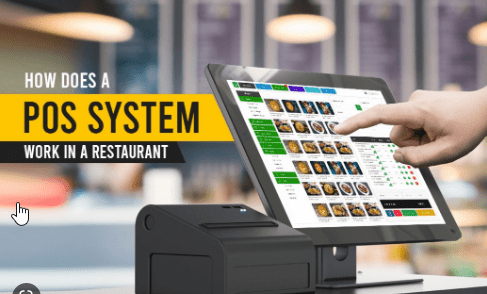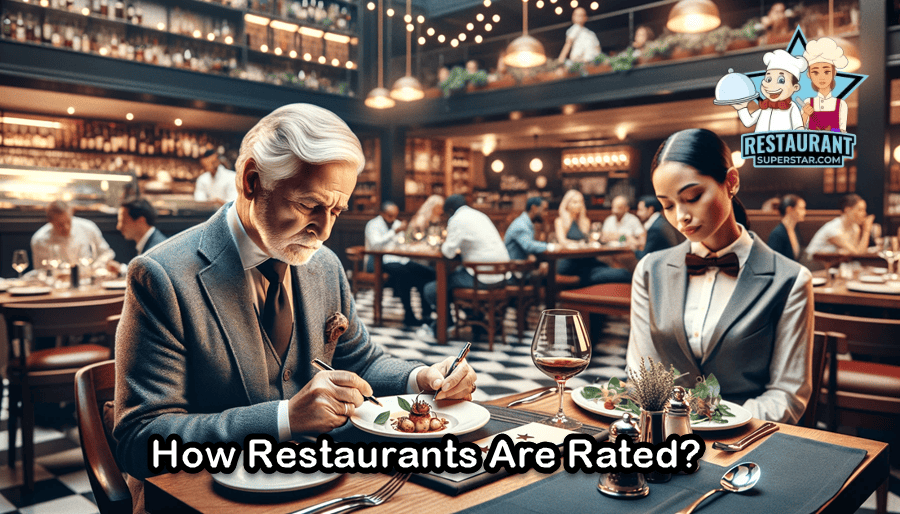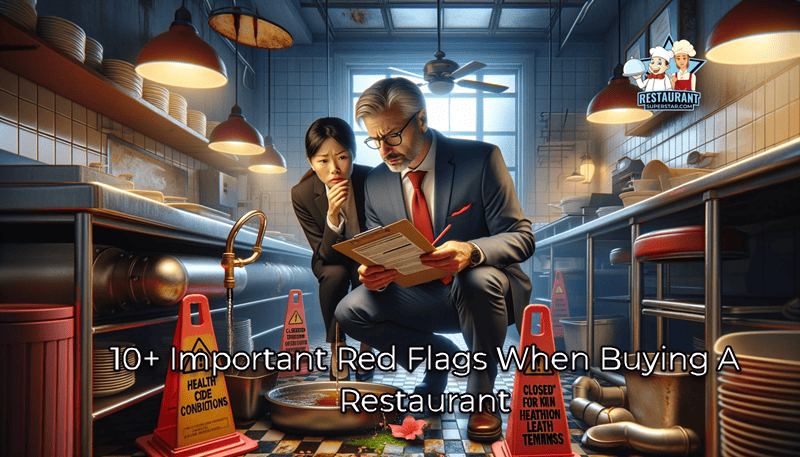How Does a Restaurant POS System Work 7 Easy Steps

Hey there, fellow restaurateurs!
If you were wondering …. How Does a Restaurant POS System Work?
You’re in the right place.
As a seasoned restaurant owner, I understand that a reliable POS system is essential for success in the hospitality industry. Let me share my insights with you.
How Restaurant POS System Works
How Does a Restaurant POS System Work? A restaurant POS system streamlines operations by taking orders, processing payments, managing inventory, handling employee scheduling, providing reports, and managing customer data. It makes your restaurant more efficient, helps you make data-driven decisions, and boosts your profits.
What is a Restaurant POS System?
A restaurant POS (Point of Sale) system is an advanced software platform that streamlines many aspects of running a restaurant, from taking orders to managing sales and inventory. It’s the backbone of your restaurant’s operations and helps you manage your business efficiently.
How Does a Restaurant POS System Work? 7 ways
Let’s dive into the nitty-gritty of how a restaurant POS system works. I’ll break it down into several key components and explain how they contribute to your restaurant’s success.
1 – Order Taking
The POS system simplifies order taking by enabling servers to input orders directly using a tablet, computer, or mobile device. This minimizes communication errors between servers and the kitchen, ensuring customers receive their meals accurately and quickly.
2 – Payment Processing
When wondering, “How Does a Restaurant POS System Work?” one of the most significant advantages is its ability to process payments seamlessly. Your POS system will accept various payment methods, such as credit cards, debit cards, and mobile payments. The system securely stores customers’ payment information and instantly sends it to your payment gateway, making transactions fast and efficient.
3 – Inventory Management
A top-notch restaurant POS system helps you manage your inventory by tracking your stock levels and providing alerts when it’s time to reorder. You can also analyze your sales data to identify trends and decide which menu items to continue offering and which to discontinue.
4 – Employee Management
A restaurant POS system simplifies employee management by tracking work hours, scheduling shifts, and monitoring sales performance. This data can help you identify your top performers and make better employee training and incentives decisions.
5 – Streamline Server-Kitchen Flow with POS
One of the most extraordinary things about a digital POS system is how it immediately connects the front and back of your restaurant. Orders go straight to the kitchen and appear on screens or print out, making life much easier. Without a POS, servers must keep running back and forth to the kitchen to place orders.
Relying on handwritten tickets can be chaotic, especially when things get busy. Orders can be hard to read, and it’s easy to forget items or write unclear instructions. This stresses out everyone, from the kitchen to the customers.
With a digital POS, communication becomes a breeze. Orders head to the kitchen the moment they’re taken, letting your chefs whip up dishes quicker. It also gives your servers more time to top off drinks and check on other tables. The result? Your front-of-house team can focus on keeping customers happy instead of shouting orders to the back.
6 – Reporting and Analytics
One of the best features of a restaurant POS system is its ability to provide real-time insights into your business. You can access various reports and data, such as sales summaries, product mix reports, and customer preferences, to help you make data-driven decisions that will ultimately increase your profits.
7 – Customer Management
The customer management feature in a restaurant POS system allows you to create and maintain a database of your customers. This can be used for personalized marketing campaigns, loyalty programs, and targeted promotions to keep customers returning for more.
Check out these must-have features for your POS system in 2023
- Money Matters: Keep track of your dough with vital sales reports – they’re key to making smart moves and growing a profitable eatery.
- Smooth Sailing Orders: A slick order management system speeds up your restaurant and boosts efficiency.
- Gettin’ Digital: In today’s world, you need an online presence. Make sure your food biz has a website that supports online ordering.
Choosing the Right Restaurant POS System
Now that we’ve answered the question, “How Does a Restaurant POS System Work?”, let’s talk about finding the right one for your restaurant. Here are a few factors to consider:
User-Friendly Interface: Your staff will use the POS system daily, so make sure it’s easy to navigate and user-friendly.
Customization: Every restaurant has unique requirements, so choose a system that can be customized to meet your specific needs.
Scalability: As your restaurant grows, you’ll need a POS system. Look for one that can accommodate additional locations, devices, and users.
Cloud-Based vs. On-Premises: Cloud-based POS systems offer many advantages, such as automatic updates and remote access to your data. However, an on-premises solution might be more suitable if your restaurant has limited internet access.
Pricing: Consider the total cost of ownership, including hardware, software, support, and payment processing fees.
How Much Does A Restaurant POS System Cost?
The cost of a restaurant POS system varies depending on several factors, such as software features, hardware requirements, and the provider’s pricing model. Here’s a general overview of the costs involved:
- Software: POS software pricing can range from free (with limited features) to $100 or more per month, depending on the features and the number of users or devices.
- Hardware: Restaurant POS hardware, including tablets, cash registers, receipt printers, and barcode scanners, can cost anywhere from $1,000 to $5,000 or more, depending on the quality and the number of devices needed.
- Payment processing fees: These fees vary depending on the provider and your sales volume, but generally, you can expect to pay around 2-4% per transaction.
- Installation and support: Some providers may charge extra for installation, training, and ongoing support, while others include these services in monthly fees.
It’s crucial to evaluate your restaurant’s unique requirements and compare various POS providers to identify the most budget-friendly option that delivers your business’s appropriate features and support. If you’re looking for a restaurant POS with reasonable pricing and excellent support, don’t forget to check out Mstar POS.
FAQS
How do Restaurant POS Systems work step by step?
Operating a retail POS system is a breeze. First, just scan the product’s barcode or enter it into the register. Next, once the order’s in, go ahead and process the payment to complete the transaction. And hey, if you wanna explore extra features, it’s all up to your business needs and the software you pick.
How do beginners use POS machines?
- Start by logging into your POS system.
- Either scan the product’s barcode or select the item from your display.
- Use the card reader to scan the customer’s card for payment.
- Request the customer to confirm the transaction using their PIN.
- Generate a receipt, print it, and provide it to the customer.
How much does it cost to run a POS system?
What is the cost of operating a POS system? The expenses for POS software can vary from $0 to over $200 per month for cloud-based systems, or a one-time fee beginning at approximately $1000 for traditional systems. Regarding POS hardware, prices can range from $0 for a basic card reader to upwards of $1200 for a comprehensive retail register setup.
How does a POS pays?
When a customer pays using a card or digital wallet, the POS system logs the payment. But with online POS transactions, the seller needs to hang tight for the money, ’cause a request is sent to the bank that issued the card to get the thumbs up or to charge the cardholder’s account.
What are 3 advantages and disadvantages of POS?
POS systems come with perks like improved customer service, simpler team handling, boosted sales, and a bunch more. But, they also have a few downsides, like potential security threats, steep pricing, and the risk of malware issues.
Conclusion: How Does a Restaurant POS System Work?
In conclusion, understanding “How Does a Restaurant POS System Work?” can be a total game-changer for your restaurant. A solid POS system will save you time, money, and headaches, so don’t miss out on the benefits.
If you’re in the South Florida area, MSTAR POS is your go-to company with 15 years of POS experience under their belt. You may trust their expertise to guide you to the best system for your specific situation.
Don’t hold back from purchasing a solid point-of-sale system that will help your eatery grow to new heights. In the long run, you will be glad you made this choice. Shoot me an email at Jackbastied@resturantsuperstar.com if you have any inquiries or need assistance locating the ideal POS system for your restaurant. I’d be happy to help you out. Good luck, fellow restaurateurs! Let’s make our businesses thrive together with the right POS systems in place. Cheers.
Jeff Smith is a Restaurant Consultant with over 20 years of hospitality experience ranging from server to owner and general manager. He focuses on Restaurant POS technology as well as restaurant marketing. Make sure to check out our world famous restaurant resources resources page for a comprehensive offering of hand picked resources and tools to help your business. You can also check out some of our other restaurant business articles.




